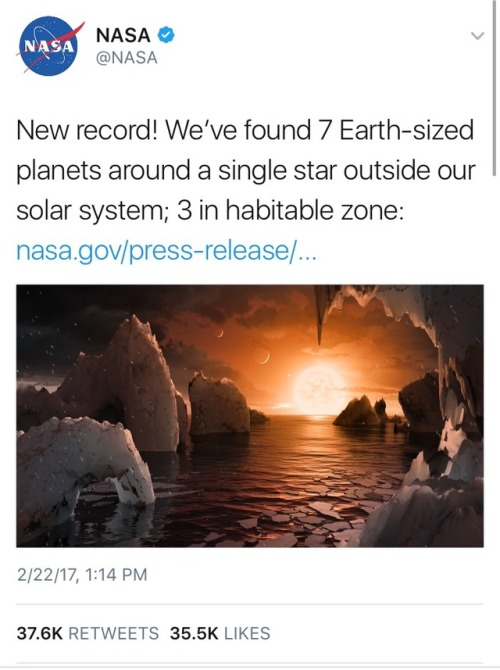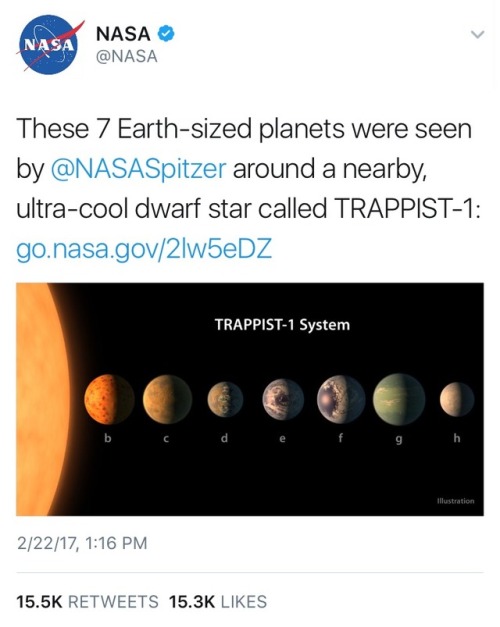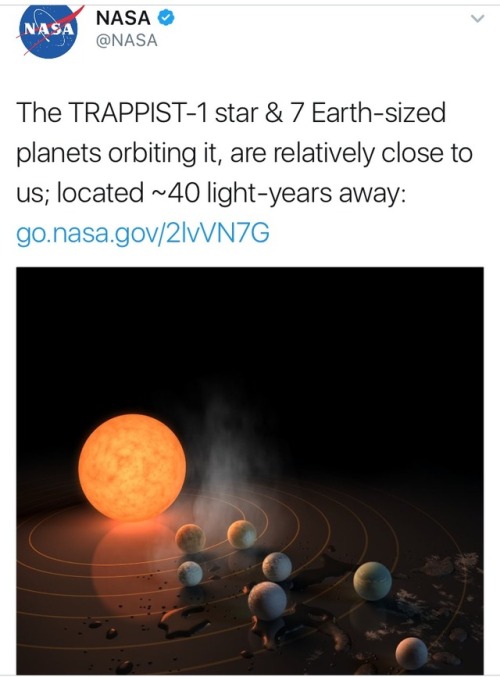English-speaking Parents Tend To Use Vague, One-size-fits-all Verbs As They Emphasize Nouns: Cars, Trucks,

English-speaking parents tend to use vague, one-size-fits-all verbs as they emphasize nouns: cars, trucks, buses, bicycles and scooters all simply “go.” Mandarin speakers do the opposite: they use catchall nouns such as “vehicle” but describe action—driving, riding, sitting on, pushing—with very specific verbs. “As a native English speaker, my first instinct when a baby points is to label,” Tardif says. Her babysitter, on the other hand, was a native Mandarin speaker, whose instinct was to name the action she thought the child was trying to achieve.
via Twitter
More Posts from Science-is-magical and Others
It always creeps me out...
…that no matter

how close

you get

the pupil
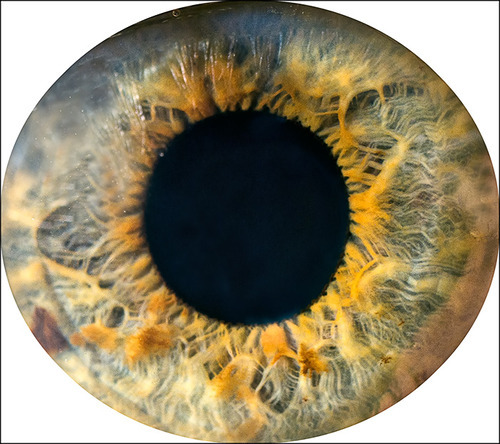
seems to

devour light

like a black hole
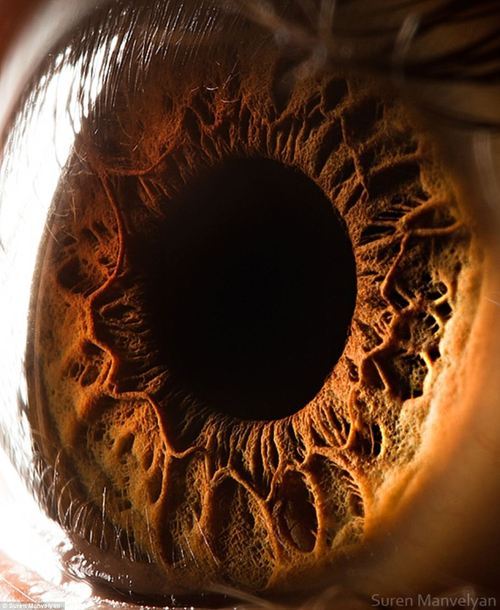
it reflects no light
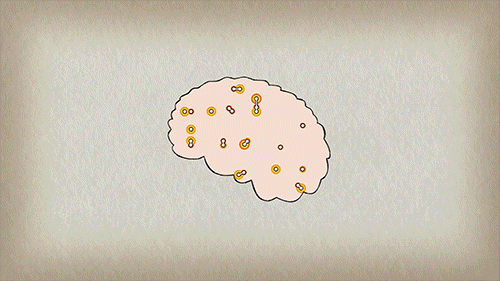
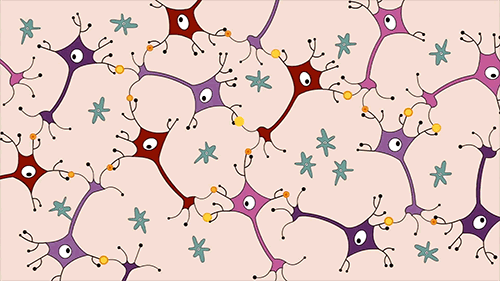

How playing an instrument benefits your brain
Recent research about the mental benefits of playing music has many applications, such as music therapy for people with emotional problems, or helping to treat the symptoms of stroke survivors and Alzheimer’s patients. But it is perhaps even more significant in how much it advances our understanding of mental function, revealing the inner rhythms and complex interplay that make up the amazing orchestra of our brain.
Did you know that every time musicians pick up their instruments, there are fireworks going off all over their brain? On the outside they may look calm and focused, reading the music and making the precise and practiced movements required. But inside their brains, there’s a party going on.
From the TED-Ed lesson How playing an instrument benefits your brain - Anita Collins
Animation by Sharon Colman Graham






Happy TRAPPIST-1 Day!
Here’s a comic on our latest discovery!
http://www.space.com/35806-trappist-1-facts.html

We don’t have any real pictures of the Milky Way galaxy. Most non-illustrated images of the entire Milky Way spiral are actually of another spiral galaxy called Messier 74. It’s impossible to take a full photo of the Milky Way’s spiral structure because it’s about 100,000 light-years across, and we’re stuck on the inside. Source Source 2 Source 3

what the article doesn’t tell you is that this has happened once before, and she forgot how to use her drill. she remembered how to drill later one, but then she shut down again for no clear reason. it is still unclear if she remembers how to drill. i love her so much
Magnetospheres: How Do They Work?
The sun, Earth, and many other planets are surrounded by giant magnetic bubbles.

Space may seem empty, but it’s actually a dynamic place, dominated by invisible forces, including those created by magnetic fields. Magnetospheres – the areas around planets and stars dominated by their magnetic fields – are found throughout our solar system. They deflect high-energy, charged particles called cosmic rays that are mostly spewed out by the sun, but can also come from interstellar space. Along with atmospheres, they help protect the planets’ surfaces from this harmful radiation.
It’s possible that Earth’s protective magnetosphere was essential for the development of conditions friendly to life, so finding magnetospheres around other planets is a big step toward determining if they could support life.
But not all magnetospheres are created equal – even in our own backyard, not all planets in our solar system have a magnetic field, and the ones we have observed are all surprisingly different.

Earth’s magnetosphere is created by the constantly moving molten metal inside Earth. This invisible “force field” around our planet has an ice cream cone-like shape, with a rounded front and a long, trailing tail that faces away from the sun. The magnetosphere is shaped that way because of the constant pressure from the solar wind and magnetic fields on the sun-facing side.

Earth’s magnetosphere deflects most charged particles away from our planet – but some do become trapped in the magnetic field and create auroras when they rain down into the atmosphere.

We have several missions that study Earth’s magnetosphere – including the Magnetospheric Multiscale mission, Van Allen Probes, and Time History of Events and Macroscale Interactions during Substorms (also known as THEMIS) – along with a host of other satellites that study other aspects of the sun-Earth connection.


Mercury, with a substantial iron-rich core, has a magnetic field that is only about 1% as strong as Earth’s. It is thought that the planet’s magnetosphere is stifled by the intense solar wind, limiting its strength, although even without this effect, it still would not be as strong as Earth’s. The MESSENGER satellite orbited Mercury from 2011 to 2015, helping us understand our tiny terrestrial neighbor.


After the sun, Jupiter has by far the biggest magnetosphere in our solar system – it stretches about 12 million miles from east to west, almost 15 times the width of the sun. (Earth’s, on the other hand, could easily fit inside the sun.) Jupiter does not have a molten metal core like Earth; instead, its magnetic field is created by a core of compressed liquid metallic hydrogen.

One of Jupiter’s moons, Io, has intense volcanic activity that spews particles into Jupiter’s magnetosphere. These particles create intense radiation belts and the large auroras around Jupiter’s poles.

Ganymede, Jupiter’s largest moon, also has its own magnetic field and magnetosphere – making it the only moon with one. Its weak field, nestled in Jupiter’s enormous shell, scarcely ruffles the planet’s magnetic field.
Our Juno mission orbits inside the Jovian magnetosphere sending back observations so we can better understand this region. Previous observations have been received from Pioneers 10 and 11, Voyagers 1 and 2, Ulysses, Galileo and Cassini in their flybys and orbits around Jupiter.

Saturn’s moon Enceladus transforms the shape of its magnetosphere. Active geysers on the moon’s south pole eject oxygen and water molecules into the space around the planet. These particles, much like Io’s volcanic emissions at Jupiter, generate the auroras around the planet’s poles. Our Cassini mission studies Saturn’s magnetic field and auroras, as well as its moon Enceladus.


Uranus’ magnetosphere wasn’t discovered until 1986 when data from Voyager 2’s flyby revealed weak, variable radio emissions. Uranus’ magnetic field and rotation axis are out of alignment by 59 degrees, unlike Earth’s, whose magnetic field and rotation axis differ by only 11 degrees. On top of that, the magnetic field axis does not go through the center of the planet, so the strength of the magnetic field varies dramatically across the surface. This misalignment also means that Uranus’ magnetotail – the part of the magnetosphere that trails away from the sun – is twisted into a long corkscrew.


Neptune’s magnetosphere is also tilted from its rotation axis, but only by 47. Just like on Uranus, Neptune’s magnetic field strength varies across the planet. This also means that auroras can be seen away from the planet’s poles – not just at high latitudes, like on Earth, Jupiter and Saturn.

Does Every Planet Have a Magnetosphere?
Neither Venus nor Mars have global magnetic fields, although the interaction of the solar wind with their atmospheres does produce what scientists call an “induced magnetosphere.” Around these planets, the atmosphere deflects the solar wind particles, causing the solar wind’s magnetic field to wrap around the planet in a shape similar to Earth’s magnetosphere.

What About Beyond Our Solar System?
Outside of our solar system, auroras, which indicate the presence of a magnetosphere, have been spotted on brown dwarfs – objects that are bigger than planets but smaller than stars.
There’s also evidence to suggest that some giant exoplanets have magnetospheres. As scientists now believe that Earth’s protective magnetosphere was essential for the development of conditions friendly to life, finding magnetospheres around exoplanets is a big step in finding habitable worlds.
Make sure to follow us on Tumblr for your regular dose of space: http://nasa.tumblr.com
-
 mouthfulofbirds liked this · 1 year ago
mouthfulofbirds liked this · 1 year ago -
 sommerlyrik liked this · 4 years ago
sommerlyrik liked this · 4 years ago -
 silverhound2515 liked this · 4 years ago
silverhound2515 liked this · 4 years ago -
 alycat150 reblogged this · 4 years ago
alycat150 reblogged this · 4 years ago -
 riete-imbecil liked this · 6 years ago
riete-imbecil liked this · 6 years ago -
 lavagatrabajadoble liked this · 6 years ago
lavagatrabajadoble liked this · 6 years ago -
 heyhosers liked this · 6 years ago
heyhosers liked this · 6 years ago -
 piano-like-an-epic-sir liked this · 6 years ago
piano-like-an-epic-sir liked this · 6 years ago -
 christinachristina89-blog liked this · 6 years ago
christinachristina89-blog liked this · 6 years ago -
 icebluecyanide liked this · 7 years ago
icebluecyanide liked this · 7 years ago -
 nanazeestuff liked this · 7 years ago
nanazeestuff liked this · 7 years ago -
 couchlordkay liked this · 7 years ago
couchlordkay liked this · 7 years ago -
 you-hung-themoon reblogged this · 7 years ago
you-hung-themoon reblogged this · 7 years ago -
 manamanatee liked this · 7 years ago
manamanatee liked this · 7 years ago -
 leahweird reblogged this · 7 years ago
leahweird reblogged this · 7 years ago -
 leahweird liked this · 7 years ago
leahweird liked this · 7 years ago -
 laughingpinecone liked this · 7 years ago
laughingpinecone liked this · 7 years ago -
 labyrinthphanlivingafacade liked this · 7 years ago
labyrinthphanlivingafacade liked this · 7 years ago -
 puzzleaddictyomz reblogged this · 7 years ago
puzzleaddictyomz reblogged this · 7 years ago -
 bonesintheroses reblogged this · 7 years ago
bonesintheroses reblogged this · 7 years ago -
 flamboyantlycriminal liked this · 7 years ago
flamboyantlycriminal liked this · 7 years ago -
 wellbutrinshakes reblogged this · 7 years ago
wellbutrinshakes reblogged this · 7 years ago -
 spouseoftherisingsun reblogged this · 7 years ago
spouseoftherisingsun reblogged this · 7 years ago -
 amphibiousfae liked this · 7 years ago
amphibiousfae liked this · 7 years ago -
 tuulikki reblogged this · 7 years ago
tuulikki reblogged this · 7 years ago -
 bingobramble reblogged this · 7 years ago
bingobramble reblogged this · 7 years ago -
 rovinsyk reblogged this · 7 years ago
rovinsyk reblogged this · 7 years ago -
 choppywaterswiftboats liked this · 7 years ago
choppywaterswiftboats liked this · 7 years ago -
 febreezesuncle-blog liked this · 7 years ago
febreezesuncle-blog liked this · 7 years ago -
 thedenofcaseywolfe liked this · 7 years ago
thedenofcaseywolfe liked this · 7 years ago -
 matsonjones reblogged this · 7 years ago
matsonjones reblogged this · 7 years ago -
 distractionpie reblogged this · 7 years ago
distractionpie reblogged this · 7 years ago -
 absinthe-terminus liked this · 7 years ago
absinthe-terminus liked this · 7 years ago -
 sflor018 liked this · 7 years ago
sflor018 liked this · 7 years ago -
 fetchmethatpitcher liked this · 7 years ago
fetchmethatpitcher liked this · 7 years ago -
 luxuriant-radish reblogged this · 7 years ago
luxuriant-radish reblogged this · 7 years ago -
 tuulikki liked this · 7 years ago
tuulikki liked this · 7 years ago -
 grimmjowjaegerjaquez liked this · 7 years ago
grimmjowjaegerjaquez liked this · 7 years ago -
 spinningyarns reblogged this · 7 years ago
spinningyarns reblogged this · 7 years ago -
 alilbifurious liked this · 7 years ago
alilbifurious liked this · 7 years ago -
 cremebru-lee reblogged this · 7 years ago
cremebru-lee reblogged this · 7 years ago -
 rovinsyk liked this · 7 years ago
rovinsyk liked this · 7 years ago -
 niceofthenine liked this · 7 years ago
niceofthenine liked this · 7 years ago -
 stardevil653 reblogged this · 7 years ago
stardevil653 reblogged this · 7 years ago -
 bilabialtrill liked this · 7 years ago
bilabialtrill liked this · 7 years ago



